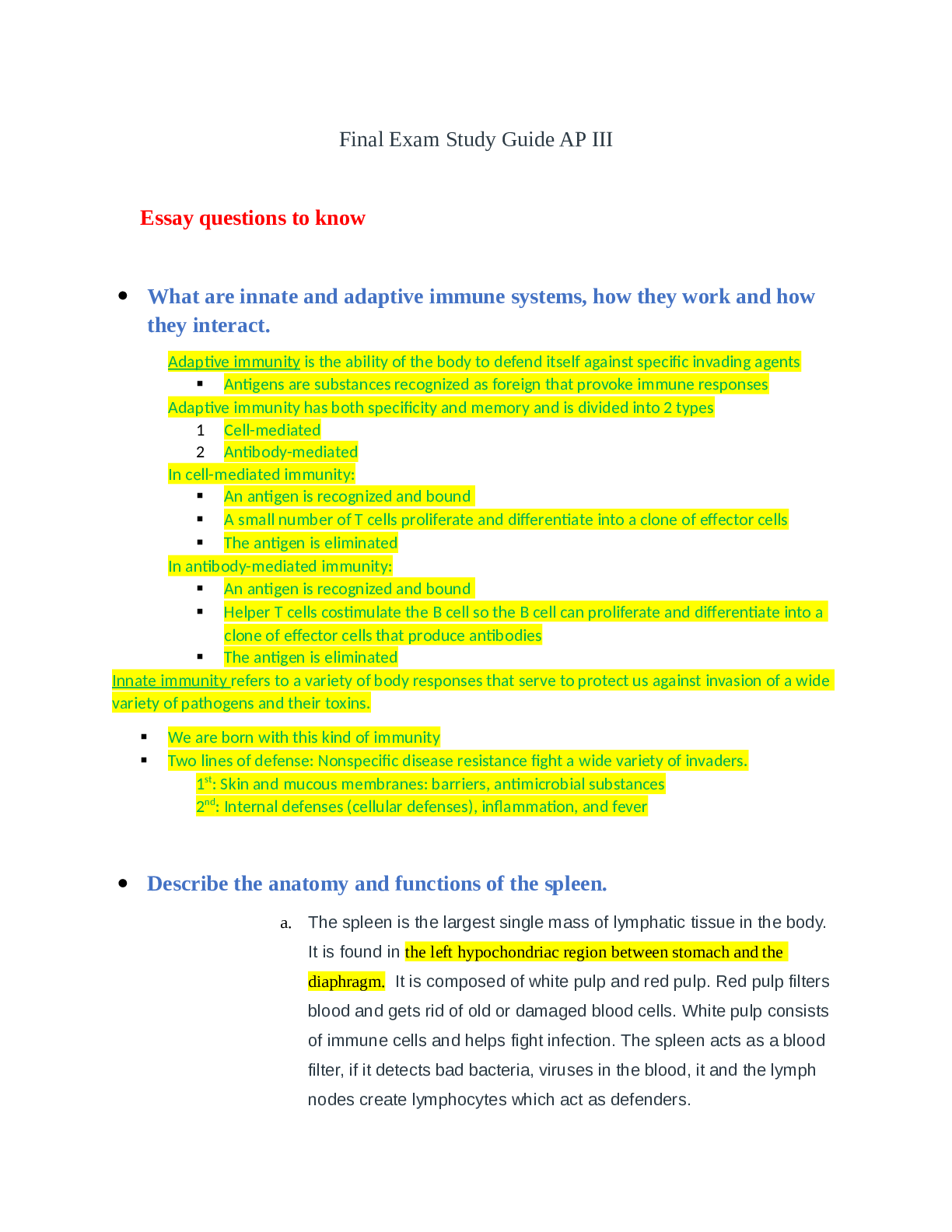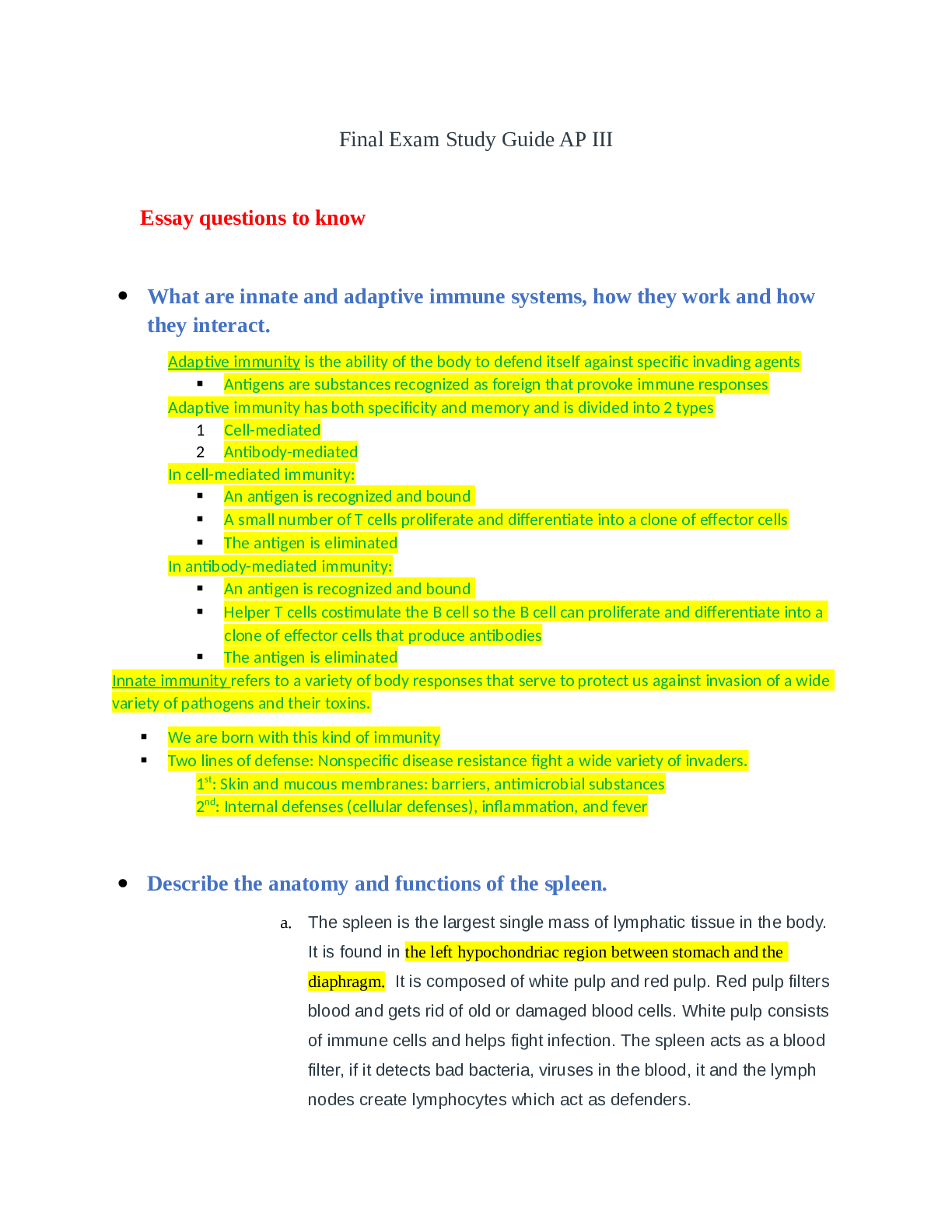Final Exam Study Guide AP III
Course
Education
Subject
Chemistry
Category
Study Guide
Pages
20
Uploaded By
ATIPROS
Preview 5 out of 20 Pages


Download all 20 pages for $ 10.00
Reviews (0)
$10.00
